The Most Useful Printable Terrain Pieces for Dungeon Masters
Every map drawn by a Dungeon Master hides something more. With printable terrain, rooms gain purpose, ruins hold danger, and forests offer more than trees. From the depths of forgotten tombs to the edges of windswept deserts, STL terrain gives you tools to build, change, and control your world – piece by piece, tile by tile.
Why Printable Terrain Is a Game-Changer for Dungeon Masters
In the heart of every campaign, there’s a map waiting to be filled. But that map doesn’t have to stay in your notes or behind a screen. DMs who step into the world of printable terrain quickly learn that it’s not just decoration – it’s a tool that brings every encounter to life.
When you place 3d printable terrain on your table, you give your players something to interact with. A stone bridge becomes a choke point. A barricade turns into cover. A twisted tree in the middle of the forest? Maybe that’s where the banshee waits. Players stop imagining and start engaging, because what they see is real enough to shape decisions.
Using RPG terrain STL files means you can quickly print a new battlefield, a secret temple, or a forest shrine without crafting from scratch. Unlike static battle maps, terrain pieces can be picked up, rotated, and changed mid-game. A blocked passage? Just swap a tile. Secret room? Lift the wall.
And if you’re using an FDM printer, you’re in luck – many of our terrain sets are tailored specifically for filament printing, with no need for supports. That means faster prints, less cleanup, and excellent results right off the build plate.
When it comes to dungeon terrain STL, the benefit is clear: you control how the world looks and evolves. Rooms can collapse. Floors can tilt. And nothing beats the sound of your players reacting to something they didn’t expect to see until it was placed right in front of them.
DMs who adopt DnD terrain models say the same thing – once you start, it’s hard to go back. The physicality shapes storytelling in ways no dry-erase marker ever could.
Tactical terrain + visual storytelling = unforgettable sessions.
Top STL Terrain Kits for DnD: From Forests to Ruins
A journey never stays in one place. Players move from village to valley, ruin to riverbank. That’s why the best terrain collection covers many environments, and that’s where a solid mix of STL terrain kits for dungeon masters comes in.
The wilderness is a popular stop for many adventuring parties. With forest terrain STL for tabletop, you can create encounters beneath ancient canopies, around mysterious stones, or inside deep woods where monsters wait behind every trunk. Trees and rocks aren’t just decoration; they guide movement and can even hide NPCs or threats until the perfect moment.
But the world isn’t all green. Forgotten ruins add depth to exploration scenes. With ruined terrain for DnD, you get crumbled walls, shattered towers, and haunted temples. These aren’t just backdrops. They tell a story of what came before, and offer your players chances to investigate, hide, or set traps of their own.
Every region has its challenges. With desert terrain STL, you can bring heat, open sightlines, and dangerous terrain into the campaign. Rock arches, dry ravines, and ancient tombs – they all serve different combat strategies. In deserts, positioning matters more. That wide-open feel keeps everyone on edge.
Between quests and combat, the party needs to rest. That’s where campfire and inn terrain for tabletop adds flavor. Imagine building the corner of a warm inn, placing food on a table, and letting players play out a night of downtime. Terrain for peaceful moments matters too, as it deepens the sense of worldbuilding.
Choosing Terrain STL Files Based on Encounter Type
Every encounter benefits from the right setting. A boss fight in a narrow hallway doesn’t have the same energy as one on a collapsing bridge. Choosing the right fantasy terrain STL files means tailoring the world to match the intensity, mood, and goals of the scene.
If you’re preparing an ambush, think vertical. Include elevation. Enemies above, players below. When players must consider sightlines, climbing paths, and fallback routes, the scene becomes richer. That’s where 3d printed terrain for DnD shines – stairs, ledges, platforms, and cliffs bring height into play.
For puzzles or traps, you’ll want simple props layered on top of structural terrain. That could be tiles with pressure plates, doors that can be opened or sealed, or rotating statues that trigger events. All these options are accessible through printable terrain libraries focused on interaction.
Consider your combat style. If your group prefers fast action, use open terrain with limited cover. If they enjoy strategy, fill the board with obstacles, blocked lines of sight, and potential hazards.
Some terrain is neutral, others set a tone. Placing DnD terrain models of ancient pillars and moss-covered shrines signals something mystical. Broken weapons on the ground? Expect a fight. Your terrain sets expectations before the first dice roll.
Choosing models that are compatible with your printer also improves the experience — and with FDM-ready options like the Frost Wizard Tower, Riddermercia Set, or Viking Houses Bundle, setup becomes part of the fun.
How to Combine Props and Terrain for Immersive RPG Play
It’s not just about walls and floors. The objects placed within those spaces carry just as much weight. Smart DMs know that combining essential terrain for dungeon masters with movable props increases engagement and keeps players thinking.
Your dungeon may have stone floors and twisting halls, but what’s inside them? A sacrificial altar. An overturned bookshelf. A frozen statue of a previous adventurer. That’s the level of detail that comes with the castle walls STL for RPG, mixed with themed furniture and objects.
Here’s one approach:
- Build your room layout with base terrain.
- Add visual cues (cracks, torches, vines).
- Drop in 2 to 3 props that suggest story or danger.
- Let players interact, move, or examine those props during play.
Props can also be functional. Use a crate as cover. Let players tip over a table to shield from ranged attacks. Add a magical orb as a lever for a puzzle. Printed terrain combined with printed objects is more than aesthetic, as it opens up gameplay options that don’t rely only on dice or imagination.
That’s where RPG terrain STL proves its worth. A single print session can give you everything you need for traps, treasure, and story hooks that feel real in your hands. Plus, with supportless FDM prints, even your smallest props can be printed cleanly and quickly — ready for game night with minimal fuss.
Props + interactive terrain = story-driven sessions with high engagement.
Must-Have Printable Terrain for Boss Fights and Ambushes
A boss fight should never feel ordinary. Whether it’s the showdown in an abandoned tower or a surprise attack deep in the woods, the terrain for boss fights in DnD must raise the stakes. Not just in difficulty, but in drama.
Start by defining the space. Is it circular, wide open, or full of obstacles? Broken pillars might surround a boss in a ruined cathedral. One in a deep mine may attack from behind cover. With STL terrain kits for dungeon masters, you can build the exact battlefield that supports the mechanics of your encounter.
You’ll want three things:
- A unique layout – players should feel the shift from regular combat.
- Environmental hazards – lava, pit traps, falling debris.
- Strategic positioning – bosses should use the terrain, too.
For ambushes, the terrain should funnel players or create blind spots. With printable terrain, a simple forest path can be layered with trees, rocky outcrops, and a ravine that forces the party into a trap. Add ruined terrain for DnD on the edge, and the party might use broken walls as last-ditch defenses.
The final detail is verticality. Players expect to fight on a flat grid, but when the boss flies, teleports, or knocks them off ledges, they’ll remember the fight for years. When you’re using FDM-friendly terrain like our Modular Bifrost Bridge or The Two Trees, it’s easy to add that sense of vertical drama without dealing with complicated overhangs or supports.
Well-built terrain = boss fights that feel like final chapters, not just high-HP enemies.


